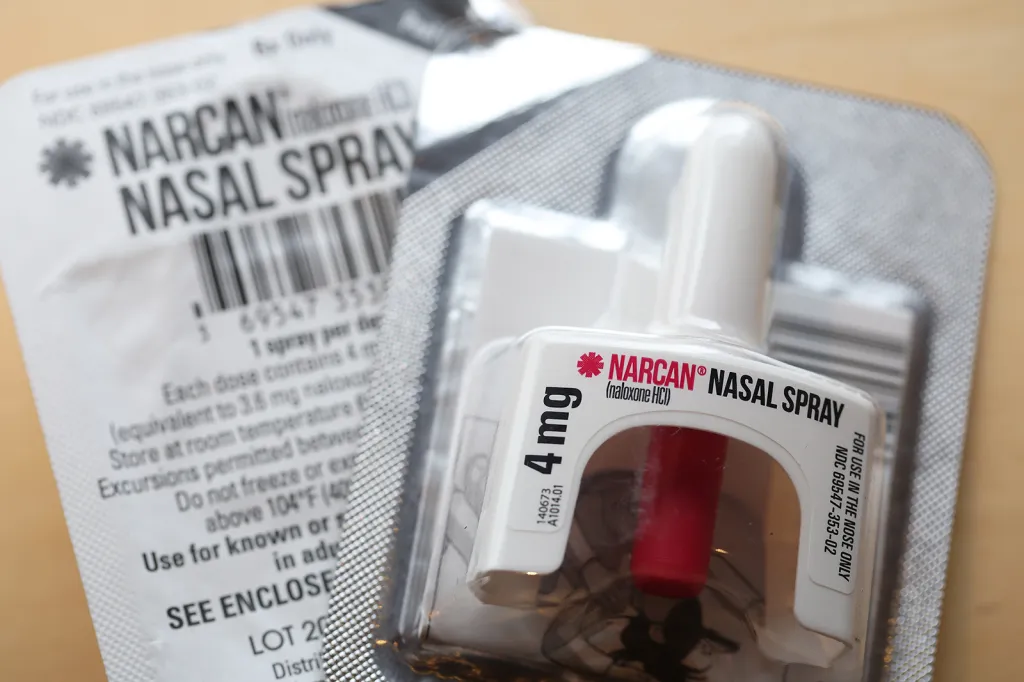
RICHMOND — Virginia’s overdose rate has been on a decline, and now recovery advocates are worried the president’s proposed budget plans may reverse this.
The Trump Administration’s proposed budget for fiscal year 2026, which starts in October, includes a $33.3 billion cut to the Department of Health and Human Services, according to the American Addiction Centers.
This cut will affect the Substance Abuse and Mental Health Services Administration, or SAMHSA. Part of their work includes funding naloxone distribution and training. One reason the Trump administration recommended the dismantling of SAMHSA was because it funded harm reduction, or “dangerous activities.”
SAMHSA also funds the 988 mental health crisis hotline. This hotline made headlines earlier this year when its LGBTQ+ specialized services were cut by the Trump Administration, according to advocacy group The Trevor Project.
Naloxone, better known by the brand name Narcan, is a drug administered to revive someone experiencing an overdose. The drug attaches to opioid receptors in the brain and counteracts and blocks the effects of opioids, according to the National Institute of Drug Abuse. Opioids include drugs like some prescription painkillers, heroin or fentanyl.
Naloxone is administered as a nasal spray or an injection.
Deadly Overdoses Decline
The death by drug overdose number in Virginia decreased by 34% from 2023 to 2024, according to the Virginia Department of Health.
The last time overdose numbers were under 1,000 was over a decade ago. The number of deaths continued to spike almost every year after, and reached a high of 2,669 in 2021.
Dr. Joshua Lynch is chief medical officer and founder of Medication for Addiction Treatment & Electronic Referals Network, or MATTERS, based in New York.
A lot of progress has been made to combat the opioid epidemic.
“The decrease in opioid overdose deaths in 2024 kind of reflects that progress we’ve made,” Lynch said.
MATTERS is a multi-state program that works to help people overcome obstacles in their addiction treatment.
“We didn’t see a reduction in overdose deaths because of one thing,” Lynch said. “We saw it because programs work together, people work together.”
Earlier this year, the nationwide number of deaths by overdose began to creep up, according to Lynch.
“I would have to imagine that access to resources must’ve gone down,” Lynch said.
The Centers for Disease Control and Prevention has reported longer delays in overdose reports for their National Center for Health Statistics.
Jesse Wysocki is chief operations officer of the McShin Foundation, a Henrico County-based nonprofit which offers recovery support services.
Naloxone and harm reduction centers have become more widely available than they were in the past, and that has helped save lives, according to Wysocki.
“We weren’t allowed to have it [naloxone] at one time,” Wysocki said. “There was a lot of things you had to do in order to get Narcan.”
The state health commissioner in 2016 issued a statewide naloxone standing order that authorized pharmacists to dispense naloxone without a prescription.
The drug is easy to use and won’t cause harm if used incorrectly, according to Wysocki.
“It’s not necessarily the training piece, it’s the access to Narcan that we don’t want to get affected,” Wysocki said.
Training is still important so people won’t hesitate to use naloxone on an individual overdosing on opioids, according to Wysocki.
The proposed budget kept $5.7 billion of funding that was formerly under SAMHSA, according to the document. The version passed by the House supports substance abuse treatment, prevention, and long-term recovery, including the use of opioid overdose reversal medications.
It also adds increased funding for youth and young adult suicide prevention, mental health treatment, and substance abuse prevention and treatment services.
The budget is still being debated in Congress with efforts made to avoid a government shutdown on Oct.1, which would happen if no budget is passed.
Capital News Service is a program of Virginia Commonwealth University’s Robertson School of Communication. Students in the program provide state government coverage for a variety of media outlets in Virginia.



